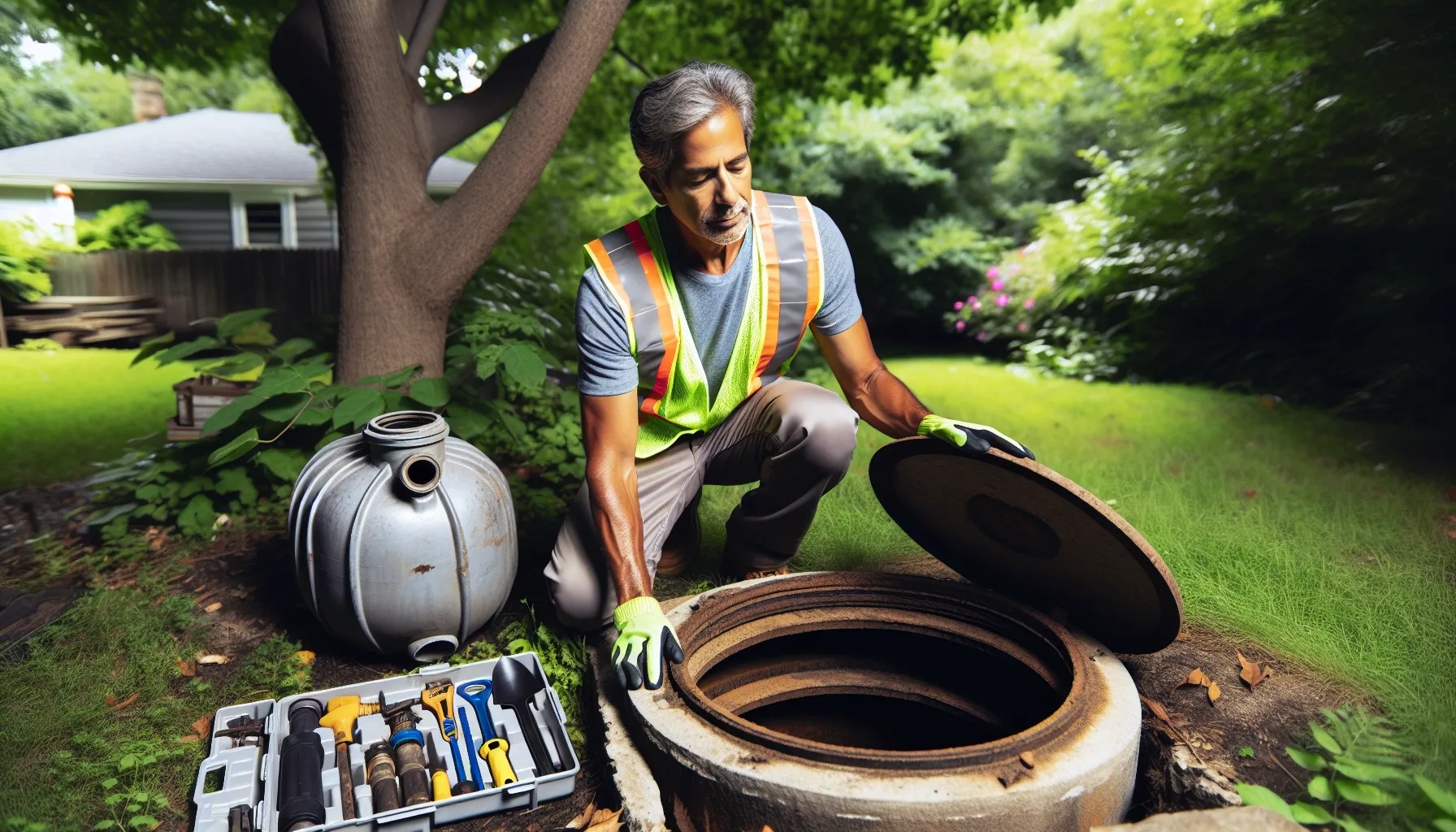Key Takeaways
- Septic System Importance: Understanding septic inspections is crucial for homeowners to maintain effective wastewater management and avoid costly repairs or environmental issues.
- Inspection Components: A thorough septic inspection includes visual assessments, functionality testing, and soil evaluations to ensure all components of the system are functioning properly.
- Common Issues Identified: Typical problems found during inspections include clogs, drain field issues, and tank integrity problems, all of which can severely affect system performance and safety.
- Scheduling Inspections: It’s essential to plan septic inspections before selling a home, soon after purchasing one, and regularly every three to five years for proactive maintenance.
- Preparation Tips: Homeowners should prepare the inspection area by clearing access to the septic system, documenting previous issues, and scheduling inspections when the system is in regular use for optimal evaluation.
When it comes to homeownership, understanding the ins and outs of a septic system is crucial. A septic inspection isn’t just a formality; it’s a vital step in ensuring our home’s wastewater management is functioning properly. If we’re considering buying or selling a property with a septic system, knowing what this inspection entails can save us from costly surprises down the road.
During a septic inspection, professionals evaluate the entire system, from the tank to the drain field, checking for any signs of malfunction or potential issues. This process helps us determine the system’s condition and whether any repairs or maintenance are needed. By familiarizing ourselves with what to expect, we can navigate the inspection confidently and make informed decisions about our property. Let’s dive deeper into the specifics of what a septic inspection includes and why it matters for our peace of mind.
Overview of Septic Inspections
Septic inspections provide a crucial assessment of a home’s wastewater management system. Understanding the details of these inspections can significantly impact decisions about property ownership, particularly during buying or selling phases.
Importance of Septic Inspections
Septic inspections play a vital role in maintaining a property’s value and functionality. These assessments uncover issues such as leaks, clogs, or system failures that could lead to costly repairs or environmental hazards. Identifying problems early enhances the appeal of a property in the market, ensuring its systems comply with local regulations. For instance, homes with failing septic systems risk significant financial liabilities. Regular inspections establish a reliable maintenance schedule, prolonging the system’s life and safeguarding homeowner investments.
When to Schedule a Septic Inspection
Scheduling a septic inspection should align with pivotal moments in property ownership. Prior to selling a home, arranging an inspection offers transparency and can eliminate potential buyer hesitations. Likewise, new homeowners should prioritize this inspection shortly after their purchase to ensure operational integrity. Additionally, routine inspections every three to five years can mitigate unforeseen issues, especially in older systems. It’s essential to consider local environmental regulations, which may dictate specific inspection timelines or requirements when buying or selling a property. These proactive measures not only maintain property value but also contribute to overall community health.
Components of a Septic Inspection

A thorough septic inspection involves multiple components that ensure the entire system functions properly. Each part of the inspection provides critical insight into the system’s overall health, enabling us to make informed decisions about maintenance or repairs.
Visual Inspection
A visual inspection assesses the septic system’s accessible components. We check the visible parts of the septic tank, including the inlet and outlet pipes, to ensure they’re clear of blockages. Observing the drain field area helps us identify signs of failure, such as pooling water or odors. Inspectors also look for vegetation changes in the area, which could indicate problems beneath the surface. This initial step often reveals immediate issues that require attention, setting the foundation for further evaluation.
System Functionality Testing
System functionality testing is crucial to evaluate how well the septic system works. We monitor the flow of water through the tank and ensure proper drainage to the drain field. This testing often includes checking for backflow, which signals obstructions in the system. We also evaluate rising and falling water levels after cycled water usage to determine the tank’s efficiency. By performing these tests, we can identify potential failures before they escalate, protecting both the property and the environment.
Soil Evaluation
Soil evaluation examines the drainage capability and overall health of the soil in the drain field. We perform percolation tests to determine how fast water seeps through the soil. This information helps us assess whether the soil can adequately filter wastewater. Additionally, we inspect for soil compaction, which can hinder drainage and lead to system failure. Understanding these soil characteristics aids in ensuring the septic system is sustainable and compliant with local regulations, significantly reducing the risk of costly malfunctions in the future.
Common Issues Found During Inspections

Understanding common issues identified during septic inspections equips us to address potential problems proactively. Inspections reveal system weaknesses that can lead to costly repairs, environmental hazards, or compromised property value.
Clogs and Blockages
Clogs and blockages present frequent challenges in septic systems. We often encounter buildup in pipes leading to the tank or within the tank itself, resulting from the accumulation of non-biodegradable materials, grease, and excessive waste. Blockages can inhibit proper flow, causing slow drainage or backups into the home. A report by the Environmental Protection Agency (EPA) indicates that clogs are a leading cause of septic system failures. Regular maintenance, including pumping the tank every 3 to 5 years, helps mitigate these issues, ensuring that wastewater flows freely and the system operates efficiently.
Drain Field Problems
Drain field problems significantly impact septic system performance. Issues such as saturated soil, improper slope, or root intrusion can inhibit wastewater absorption, leading to system failure. For example, the EPA notes that the drain field area should not have excess moisture or vegetation. If the soil becomes too wet, physical damage or health risks may occur. Conducting soil tests during inspections helps determine drainage capabilities and assess soil health and structure. Timely repairs or relocations of drain field components can prevent extensive damage and preserve system functionality.
Tank Integrity Issues
Tank integrity issues pose critical risks to the septic system. Cracks or leaks in the tank can lead to contamination of surrounding soil and groundwater. For instance, a compromised tank may allow untreated effluent to escape, posing a public health threat. During inspections, we check for signs of corrosion, physical damage, or improper fittings. The National Association of State Wastewater Administrators emphasizes the importance of maintaining tank integrity through regular inspections and timely repairs, preventing expensive remediation efforts and ensuring compliance with local regulations. Ensuring the tank’s structural soundness is vital for the longevity and efficiency of the entire system.
Preparing for a Septic Inspection
Preparing for a septic inspection involves understanding responsibilities and expectations. Homeowners can streamline the process by taking specific steps to ensure the inspection runs smoothly.
Homeowner Responsibilities
Homeowners play a crucial role in the septic inspection process. Preparing the area around the septic tank and drain field allows inspectors to access these key components easily. We should clear any debris, plants, or obstacles to provide a clear path for the inspector. Identifying and documenting any previous issues with the septic system also proves beneficial. Providing this information can help the inspector focus on critical areas that may require thorough evaluation. Scheduling the inspection at a time when the system is in regular use helps provide insight into its functionality. Taking these steps demonstrates our commitment to maintaining the septic system and contributes to a more effective inspection.
What to Expect from the Inspector
Expect a comprehensive assessment during the septic inspection. The inspector will conduct a visual examination of accessible components, looking for signs of wear, cracks, or blockages. System functionality testing often includes running water through the system to observe flow and detect any backflow issues. The inspector may perform a soil evaluation, taking percolation tests to assess drainage capabilities in the drain field. Homeowners should prepare for the possibility of immediate concerns being addressed on site. Knowing what the inspector is examining helps us understand the overall health of the septic system and prioritize maintenance where necessary.
Conclusion
Understanding the intricacies of a septic inspection is vital for all homeowners. By taking proactive steps and scheduling regular inspections we can ensure our septic systems function efficiently and avoid costly repairs down the road.
Being informed about what to expect during the inspection process empowers us to maintain our property’s value and protect our investment. It also helps us safeguard our community’s health by preventing environmental hazards.
Ultimately a well-maintained septic system not only enhances our home’s appeal but also contributes to a sustainable living environment. Let’s prioritize our septic systems and make informed decisions to keep our homes safe and functional.
Frequently Asked Questions
What is a septic system inspection?
A septic system inspection is a thorough evaluation of the entire system, including the tank and drain field. It checks for malfunctions and necessary repairs to ensure proper wastewater management, helping homeowners understand and maintain their septic system’s health.
Why are septic inspections important for homeowners?
Septic inspections are crucial as they prevent unexpected costs by identifying issues like leaks or clogs early. They also help maintain property value and functionality, ensuring compliance with local regulations and enhancing market appeal.
How often should I schedule a septic inspection?
Homeowners are advised to schedule septic inspections every three to five years, especially for older systems. Additionally, it’s best to have an inspection before selling a home or soon after purchasing one to prevent unforeseen issues.
What does a septic inspection include?
A septic inspection typically includes a visual inspection, system functionality testing, and soil evaluation. Inspectors assess accessible parts for blockages, test water flow, and examine the soil’s drainage capacity to ensure the system’s sustainability.
What common issues are found during septic inspections?
Common issues detected during septic inspections include clogs, drain field problems, and tank integrity issues. Addressing these can avert costly repairs and environmental hazards, thus ensuring the system operates efficiently and safely.
How can I prepare for a septic inspection?
To prepare for a septic inspection, clear the area around the septic tank and drain field, document any previous issues, and schedule the inspection when the system is in regular use. This helps inspectors focus on critical areas for a thorough evaluation.






